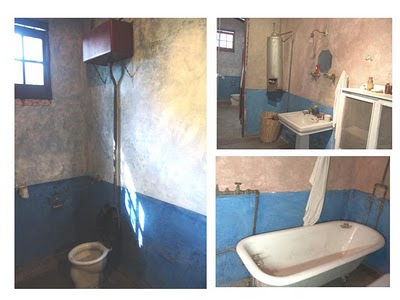

On November 15, 1996, ceased to exist on Asylum Rights Institute and Civil Liberties and instead was created the Institute of the Righst of Asylum–Museo Casa de Leon Trotsky, A.C., governed by a Board of Directors, chaired by Mr. Javier Wimer.



On the left hand of the entrance hall is the box office and entry to the Permanent Photo Gallery with the display of photographs of Leon Trotsky’s family and his arrival to Mexico in January 1937. Characters that surrounded him during his exile in our country such as Diego Rivera, Frida Kahlo and André Breton, among others, are shown. There are photographs taken by Alex Buchman of Trotsky's appearance before the Dewey Commission too, the arrival of his grandson Esteban Volkov in Mexico in 193 and those that participated in the attacks he suffered in May and August 1940, where are the accomplices, his murderer, the judicial process against him, his funeral and cremation of his body, all can be seen.
There is a bronze bust of Trotsky and three showcases that display some of the personal belongings of his second wife Natalia Sedova, his passport, correspondence with President Lazaro Cardenas and his widow Amalia Solórzano de Cárdenas, personal books of Trotsky, his glasses, a dictaphone wax cylinder in which recorded lectures, a rifle, a magnifying glass to read, etc ... On the wall are displayed posters commemorating various events held around the world related to Trotsky.



•••In the background stands an old T-shaped building divided into seven rooms that was the main house where Trotsky and Natalia Sedova lived. There are a kitchen and a dining room, a studio where Natalia and the secretaries worked, which still retains some of the personal library of revolutionary front door is the study of Trotsky which is full of books and documents, their Dictaphone, a small bed rest, a map and an ancient marble bust of revolutionary willing to side of the desk where he worked and where Trotsky himself was attacked on August 21, 1940 by her murderer Ramón Mercader, follow the bedroom principal, where they slept and Natalia Trotsky and which can still be seen on the walls, holes from the bullets of the first attack he suffered at the hands of the old revolutionary painter David Alfaro Siqueiros and his accomplices in May 1940 and forced the Put armored doors and windows to ward off future attacks.



In the background is the chamber of Trotsky's grandson Esteban Volkov, who was thirteen when Siqueiros attacked the house and received a bullet grazed his foot.
The bathroom is very modest, runs laterally to the bedrooms and is divided into two rooms, a small dressing room with the toilet in the background, where there is a rustic in the closet still preserved original clothes and shoes and Natalia


This viewpoint was built by the former owner of the property, Don Antonio Turatti, an Italian scientist who settled in Mexico in the mid-nineteenth century and that there was a workshop to carve all kinds of glasses and a laboratory that was the headquarters of Scientific Optical Institute. From the heights dominating the grounds surrounding the farm, as well as different ways o access the river and Churubusco, which at the time of Trotsky, still ran along the wall of the house.

In one corner of the tower is a bronze eagle, said to be representing the shield of the Constitutionalist army of Venustiano Carranza, and was a gift given to Mr. Turatti in recognition of services provided by the scientist to the cause Carranza. Along the perimeter fence that borders the river Churubusco is a two-story building, made of partition wall and was used to house guards and secretaries of Leon Trotsky. Today is an exhibition hall called "House of Guards" where photographs are displayed showing the stage along with Lenin of the October Revolution in Russia and of his exile.
There are images that show the old revolutionary in his role as Commissioner of the Red Army, giving speeches and haranguing the young revolutionary soldiers and others depicting Trotsky as a child and young man, his daughter, Zinaida, and different scenes of political events in which he is seen alongside other great figures of the Bolshevik Revolution, Lenin and Kamenev. Many of these images were censored from the official history of Russia under the regime of Joseph Stalin, in a crude attempt to remove Trotsky from history. In the middle of the room are displayed a couple of caps that were used in the days when Trotsky led the Red Army and the path to the output display photos of their other exiles in Turkey, France and Norway and map with the routes taken by the revolutionary in the years prior to his exile in Mexico. At the end there is a tree of the family of Leon Trotsky which can account for the tragic fate of the majority of its members who were imprisoned or executed during the anti-Trotskyist bloody repression unleashed by the Stalinist regime.
Outside is the garden where Trotsky spent long hours tending his cacti and feeding his rabbits and chickens, which had in wooden crates, next to the house of the guards, which in part is today the museum café. In the middle of the garden stands a funerary stele, made of cement, which is headed by an engraved hammer and sickle, symbol of Marxism and is topped by a flagpole, which flies a red communist flag. This posthumous monument was designed by a famed Mexican architect Juan O `Gorman in honor of Leon Trotsky and enclosed in an urn are the ashes of the revolutionary leader and his wife Natalia Sedova.

